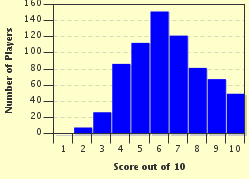Quiz Answer Key and Fun Facts
1. Sam is shopping for watermelons. She has $27 to spend, and each watermelon costs $4.50. TRUE or FALSE: She has enough money to buy an exact amount of watermelons (Not breaking the watermelon in hopes of a discount) without any money left over.
2. After seeing an ad for a new smartphone, Brian decided to get one. The next noon, he stopped by the local electronics superstore, about ten minutes away. However, the line leading to smartphone has eighty people. It took each person thirty seconds to get their smartphone, so Brian decided to go somewhere else. The next closest electronics superstore is fifteen minutes away, and has twelve people waiting for the smartphone when Brian got there. The waiting time per person is the same. If he would've gone straight to the second electronics superstore from home, he'd save five minutes. TRUE or FALSE: Brian would've taken the smartphone home faster if he hadn't left the other store.
3. There were seven people waiting at a bus stop for a ride on a bus. The stop is for Routes 12 and 17, which alternate. When Route 12 comes along, five people get on, and six get off. A third of the people that just got off of the bus are waiting to transfer to the next bus. TRUE or FALSE: There are currently four people waiting for bus Route 17.
4. Many people were at a bar. Half of them were in their twenties. There were three times as many people over fifty as children under three. A quarter of the people were in their thirties or forties. No other age groups were at this bar. Eight toddlers or infants were at this strange bar. TRUE or FALSE: There were more than 125 people at the bar.
5. Imagine there is only one video game console and every game for it costs $12. Josh wants some new video games, so he goes to the "Gaming Mountain". He found out that the trade-in rate is 10% cash, or 25% in-store credit. He currently has 17 games and want to trade them all in. TRUE or FALSE: If he first trades all possible games for new games and then sells any leftovers, he'd get four new games and $3 cash.
6. John, a pawnbroker, bought an antique lamp for $75. He sold it for $120. TRUE or FALSE: John made a 62.5% profit off the lamp.
7. Let's give your mind a break with a simpler problem:
If you have a basket of nine apples and you gave one to each of your six friends, you would have enough to give your brother, father, mother, and yourself a whole apple each.
8. A local contest is giving away a thousand dollars to a random person picked from a raffle. Your name is entered into the raffle once for every hundred dollars you spend at the local mall. Jamie bought a new TV, stereo, and couch for $200 each. There are a total of 597 other entries. TRUE or FALSE: The probability of Jamie winning the raffle is less than 1%.
9. Pi is commonly known for being irrational and its use in figuring out certain measurements of a circle. Pie is commonly known for being a delicious snack. For some reason, Carl wants to figure out the radius of his pie tin using only a ruler for measuring. TRUE or FALSE: He has to use pi to figure this out.
10. Clara took a ten-question "True or False" quiz, similar to the one you're taking right now. Not knowing the answer to any question, she guessed on all of them. TRUE or FALSE: There is a 5% chance that she'd complete the quiz with every question answered correctly.
Source: Author
farage5
This quiz was reviewed by FunTrivia editor
WesleyCrusher before going online.
Any errors found in FunTrivia content are routinely corrected through our feedback system.

